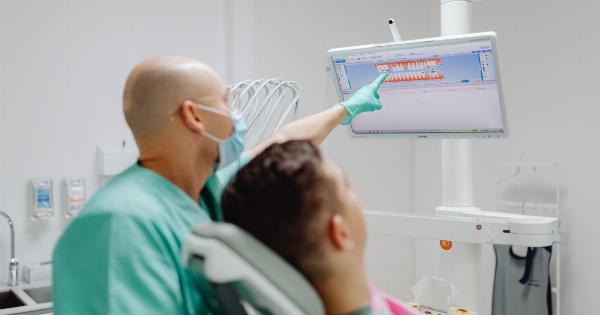Stomatitis refers to the inflammation of the mucous lining in the mouth and can cause discomfort and pain in children.
It is a common condition that can be caused by various factors, such as viral or bacterial infections, allergies, or poor oral hygiene. Recognizing the symptoms and getting a proper diagnosis is essential for effective treatment and management of stomatitis in children.
In this article, we will discuss the typical symptoms of stomatitis and the diagnostic methods used by healthcare professionals.
Symptoms of Stomatitis in Children
1. Canker sores: These are small, shallow ulcers that may appear on the gums, tongue, or inside the cheeks. They can be painful and may make eating or speaking difficult for children.
2. Redness and swelling: The affected areas of the mouth, including the gums and inner cheeks, may appear reddened and swollen. This inflammation can contribute to further discomfort and pain.
3. Mouth pain or soreness: Children with stomatitis often complain of pain or soreness in their mouth. This can make it challenging for them to brush their teeth or consume certain foods.
4. Difficulty swallowing: Stomatitis can result in difficulty swallowing, especially if the sores or ulcers are present on the back of the throat or near the tonsils.
5. Bad breath: In some cases, stomatitis can cause bad breath due to the presence of infection or inflammation in the mouth.
6. Excessive drooling: Younger children who are unable to communicate their discomfort may exhibit increased drooling as a sign of stomatitis.
7. Fever: Depending on the underlying cause of stomatitis, children may develop a low-grade fever.
8. Loss of appetite: The pain caused by stomatitis can lead to a loss of appetite in children, resulting in inadequate nutrition and potential weight loss.
9. General irritability: Children may become irritable and fussy due to the discomfort and pain associated with stomatitis.
10. Enlarged lymph nodes: In some cases, the lymph nodes in the neck may become enlarged and tender as a result of the body’s immune response to the inflammation.
Diagnosis of Stomatitis in Children
When a child presents with symptoms suggestive of stomatitis, a healthcare professional will typically perform a thorough examination of the mouth and inquire about the child’s medical history.
The diagnosis of stomatitis may involve the following:.
1. Physical examination: The healthcare provider will examine the child’s mouth for any visible sores, redness, or swelling. They will also check for any other signs of infection or inflammation in the oral cavity.
2. Medical history assessment: The healthcare provider will ask questions about the child’s symptoms, their duration, and any recent illnesses or infections that could be contributing to the stomatitis.
3. Oral swabs: To determine if the stomatitis is caused by a viral or bacterial infection, the healthcare provider may take swabs of the affected areas in the mouth for laboratory analysis.
This can help identify the specific pathogen responsible for the inflammation.
4. Blood tests: In some cases, blood tests may be ordered to check for any underlying medical conditions or to assess the child’s general health status.
5. Allergy tests: If an allergic reaction is suspected as the cause of stomatitis, the healthcare provider may recommend allergy testing to identify the specific allergens triggering the inflammation.
6. Biopsy: In rare cases where the cause of stomatitis is uncertain or if the condition persists despite treatment, a small tissue sample (biopsy) may be taken from the affected area and sent for laboratory analysis.
This can help rule out any potential underlying abnormalities or oral diseases.
Conclusion
Recognizing the symptoms of stomatitis in children is crucial for prompt diagnosis and appropriate treatment.
If you suspect that your child may be experiencing stomatitis, it is important to consult a healthcare professional for a comprehensive evaluation. Early intervention and management can help alleviate discomfort, promote healing, and prevent complications.
By identifying the underlying cause and implementing effective treatment strategies, children with stomatitis can regain their oral health and overall well-being.























